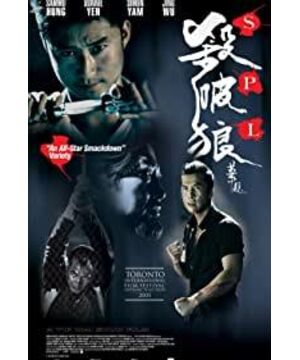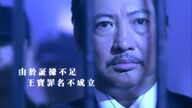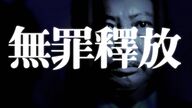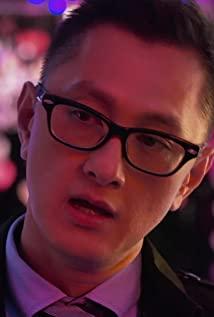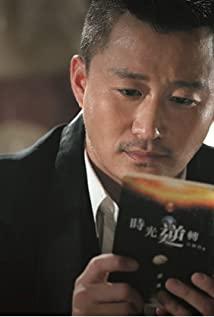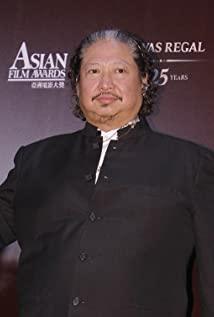Yip Weixin is currently a very active director in Hong Kong. Although he is not a high-volume player, each of his works has a strong focus. His works have various styles. He has made more orthodox films like "Ip Man", ghost films like "Midnight", comedies, love dramas, etc. (ps: He even directed "Ip Man" Brilliant Spring Pig Bajie"). He has always been a label in Hong Kong cinema. In 2005 and 2007, he successively made two action films, "Slaying the Wolf" and "Fuse", which continued in style. These two films are less discussed these days, either praising their action style or criticizing the weakness of literary drama. However, these two films have many dark elements that are unique to the directors, which are not well known, but these elements make the excellence of these two films more prominent.
1. Violent bad police
The protagonists of both films are police officers, which is a profession with a good image in people's hearts, especially in the hearts of children. But the director gave them more negative factors, resulting in a strong dramatic conflict, but also highlighted the theme of the film. First look at "Slaying the Wolf" first of all, the justice side is the two male protagonists, but Liu Guozhong, played by Ren Dahua, dispatched undercover agents to protect the witnesses in order to arrest the underworld leader Wang Bao, but these were all wiped out by Wang Bao. Although he knew it, there was no evidence. . Liu Guozhong rammed Wang Bao's car privately, killed Wang Bao's subordinates, and blamed him. At this time, the grievance between the police and the thief seems to have become a personal grievance, and the police are unscrupulous. Even if the purpose is right, the methods are no different from the criminals. Look at "Fuse" again, the protagonist is a policeman with a high rate of solving cases, but there are a lot of violent factors in the process of handling the case, and even the prisoner is beaten for life. The most violent part is with the third child of the criminal gang (played by Shi Yanneng). The villain), and when he could have been captured, the prisoner was directly killed, and it was also killed by a slow and violent weapon with one punch and one punch. The director highlights the evil under this justice in two films, without profiling, and at the same time gives us social thinking. The factors of whether violence should be used to control crimes, how to control the degree of violence, and how we should treat when justice does evil out of justice are all the layers of thinking given to us by the director.
2. A good villain who values family affection
While giving the police a black factor, the director also gave the villain enough human touch. In "Killing the Wolf", Wang Bao has always protected his wife and children. When the police arrested him for the first time, you would even feel sympathy for him and feel that the police forced him too hard. He died, leaving behind sad tears and knowing how to return when he lost his way. In "Fuse", Tony, played by Zou Zhaolong, is the head of the three brothers. For their filial piety to their mother, everything is considered great by their mother. In the final confrontation, Tony's tears and a "mother" gave them a lot of warmth. The director subtly set the two-way setting under the conflict between the positive and negative roles of the traditional drama in the big setting, and endowed the characters with elements opposite to themselves, which is a very prominent design. This kind of design has been used in movies after and before, but many of them are not as prominent as these two, especially "Slaying the Wolf", which has a scene where the villain throws a bottle of wine. It is difficult to tell who is good and who is bad. Perhaps due to censorship, such designs in "Fuse" have been diluted a lot. This kind of design can better highlight human nature and make the characters more prominent in the drama, the audience will have a better sense of substitution, and at the same time, they will also think more about why such characters behave like this, and think about changing What kind of choice do you have, the film is very good to drive the audience's rhythm.
3. The non-proposition of fatalism
The ending of "Slaying the Wolf" is a finishing touch. There is no traditional justice to defeat evil. The male protagonist was attacked and fell to his death, just in the car parked by the villain's wife. This is a very dramatic and dark ending. There is a sense of fate in the image of the galaxy in it. It is a non-themed ending that cannot be thought about, there is no room for manoeuvre, heaven is constant, and destiny is reincarnated. The righteous policeman died, the bad policeman was finally rescued, the one who saved the life died, and the one who was rescued lived to the end. The film arranges a series of contrasts and opposite dramatic conflicts, drawing an exclamation point for the end of the film. It is also at this end that the realm of the film is suddenly much higher. There is one detail, most of the set composition in the film is made of dark tones, a lot of dark tones of gray and blue, plus the weird soundtrack, the whole film presents a dark tone, only the composition at the beginning and the end is very bright. , Sunshine, beach, little girl, seems to herald the beginning in the name of justice, the process is dark, and the result is back to justice, after fate, it is sunny.
4. The half-proposition that evil does not suppress good
There is only one proposition left in "Fuse", how much violence is appropriate in the way of justice. The protagonist of the film is not someone who uses emotional intelligence or IQ to show off. The solution is very simple, that is, use violence to control violence. Within a few minutes of the beginning of the film, we have a very clear understanding of the character of the protagonist, the confrontation when catching the prisoner, and the interrogation at the police station, we can all see that Ma Jun played by Donnie Yen is a man who recognizes the truth and arrests the prisoner. In the middle of the film, when he kills the prisoner, the main point of the film is brought to a climax. The prisoner is very hateful, hurts children, and the methods are cruel. In the simplest way, beaten to death, the cruelty is comparable to that of a criminal. In the face of extreme evil, use justice or violence. This is one of the most profound propositions that the director of this film wants to explore. At the end of the film, it seems that the answer is given, but it seems that there is no answer. Ma Jun drives between cities, "I only know that the police catch the thief"
5. Continuation of style theme
The two films are very similar. First of all, the male protagonists are both Donnie Yen with the same name. In addition, both Majuns were violent in the process of law enforcement. "Slaying the Wolf" is to beat the prisoner stupid, and "Fuse" directly kills them. Both films have evil elements in the setting of the police, "Slaying the Wolf" fabricated evidence, and "Fuse" violently enforced the law. As for the villains, "Kill" has deep affection with his wife, and "Guide" has three brothers' filial piety to their mother. Both films explore the macro theme of evil under justice, and continue each other in dark styles. "Slaying the Wolf" highlights unconventional methods and fatalism, while "Fuse" highlights violence. A point of the protagonist is zoomed in. Probably because it was released in the mainland, "Fuse" has diluted too many black elements and become very formal, turning the two protagonists in "Kill" into one, highlighting only one theme, and completely abandoning fatalism. But you can still see the director's own unique style, which is a good inheritance of "Kill". After different paths, the two films finally embarked on a way of suppressing violence with violence, but one ending is very gray, and the other is very bright. In "Guide", Donnie Yen let go of Tony, who was about to be strangled to death by him. This may also be a change in the director's concept. In "Kill", the partial recognition of violence against violence has become the routine of today's police to catch thieves. By the way, there are undercover agents in both films, but Gu Tianle in "Fuse" has a better life and survived. There is also a bull-fork villain who was killed by Donnie Yen.
There are still many excellent points in the two movies, such as the fierce action style, the integration of modern fighting skills such as jiu-jitsu, ground skills, and lock skills. Many scenes have become textbook battles. The street battle between Wu Jing and Donnie Yen is so classic, I don't need to go into details. The black factor of the film has been ignored. I think this is the most prominent place of the two films, not only involving human morality but also social thinking. Of course, everyone has their own choices and their own thinking after reading it. Such problems are becoming more and more tiring in today's society, our system is constantly improving, and our humanistic outlook has gradually become civilized. However, there are still some revelations for us. As said at the end of "Fuse", there may be destiny, or someone will do it, we still have to "I only know that the police catch the thief".
View more about Kill Zone reviews


